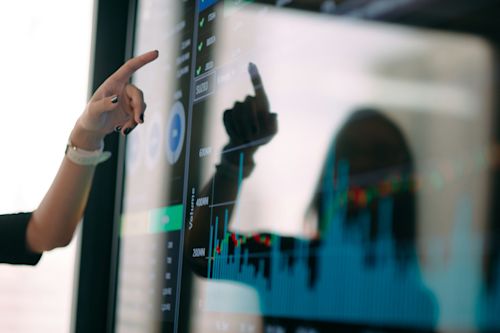Emerging Cybersecurity Trends for Manufacturers: Innovations, Risks, and Regulations

Every year, the complexity and scale of industrial cybersecurity grow significantly, keeping pace with the rapid digitalization of the manufacturing sector. The smart manufacturing market alone is projected to reach $773.4 billion by 2031, with an annual growth rate of 24.6% between 2024 and 2031.
The integration of advanced technologies—such as AI, IoT, machine learning, and 5G—makes the cyberthreat landscape increasingly unpredictable, with adversaries adopting ever more sophisticated tactics and the consequences becoming costlier.
In 2024, the average total cost of a data breach in the industrial sector rose to $5.56 million, marking the steepest increase across industries, with an additional $830,000 per incident. When production itself is disrupted, the impact can be staggering: for automakers, a halted production line costs an average of $22,000 per minute.
Industrial cybersecurity is no longer a distant or theoretical concern. The future belongs to proactive organizations that deploy advanced threat intelligence, maintain continuous monitoring across all layers of their operations, and strengthen their resilience. Yet even these measures may not always be enough.
The Impact of Artificial Intelligence

Artificial Intelligence is increasingly at the center of industrial strategies. It is a technology that permeates nearly every process and is gaining particular importance in the context of cyber threats. Reports such as the British NCSC’s 2024 study warn that AI will amplify both the volume and the impact of cyberattacks on industrial operations.
AI lowers barriers for attackers, enabling the rapid evolution and refinement of tactics used by cybercriminals, hackers, and hacktivists. At the same time, integrating AI securely into existing systems remains a major challenge. On the positive side, AI can enhance organizational cybersecurity training, and AI-powered tools are proving effective at reducing the costs associated with data breaches.
According to IBM’s ‘Cost of a Data Breach 2024’ report, the use of AI can generate average savings of up to $2.2 million per incident. However, its adoption is limited by the global shortage of qualified professionals able to implement and manage these systems. The talent gap in cybersecurity is estimated at around 4 million professionals, with demand growing at twice the rate of supply. Several reports predict that by 2025, more than half of significant cyber incidents will stem from either human error or a lack of skilled personnel.
Generative AI and Deepfake Threats in Manufacturing Cybersecurity

The risks posed by artificial intelligence have grown with the arrival of generative AI, which is putting even the most critical aspects of organizations to the test. The distinction between synthetic media and human-generated content is becoming increasingly difficult to detect, even for advanced technologies, making deepfakes an especially powerful tool for cybercriminals.
The scale of the problem is already evident. In 2022, the FBI reported 21,832 cases of business email compromise, with losses of approximately $2.7 billion. Deloitte projects that, driven by generative AI, fraud losses in the United States could rise from $12.3 billion in 2023 to $40 billion by 2027, reflecting a compound annual growth rate of 32%.
Proactive Cybersecurity and Early Threat Detection in Manufacturing

Beyond AI, another emerging cybersecurity trend is the development of a culture of vigilance built on immediate response strategies and early detection measures. Experts identify these as essential for mitigating the impact of cyberattacks and reducing reliance on cyber insurance, a market expected to reach 40 billion dollars by 2030.
A proactive cybersecurity approach requires tools capable of continuously monitoring threats in real time. Such systems strengthen resilience and preparedness by integrating multiple layers of protection, including firewalls, intrusion detection systems, security gateways, Security Information and Event Management (SIEM) platforms, endpoint protection, and Identity and Access Management (IAM).
The ultimate goal is to deliver real-time visibility into network activity, allowing suspicious behavior to be automatically flagged and investigated. This enables organizations to detect and neutralize potential vulnerabilities before they escalate into disruptions of industrial operations.
CISO Leadership and Cybersecurity Governance in Manufacturing

The responsibility for implementing these measures and tools falls on the CISO (Chief Information Security Manager), a role that has become indispensable in the manufacturing industry. They are tasked with protecting critical infrastructure, production systems, and industrial operations from cyberattacks and vulnerabilities.
They also serve as a bridge with the executive committee, raising awareness of the need to continuously update defenses and creating a holistic security strategy that extends from the supply chain to the end consumer.
In addition, CISOs play a central role in AI governance, risk management, and internal training and awareness initiatives. At the same time, they are expected to provide tangible data and results, such as measuring response times, minimizing downtime, and reducing insurance premiums.
Navigating Complex Cybersecurity Regulations

Manufacturers must also comply with a wide range of often overlapping regulations, such as the EU's NIS2 Directive, the Cyber Resilience Act, and evolving U.S. cybersecurity requirements including FAR 52.202-21, DFARS, and the Securities and Exchange Commission’s cybersecurity guidelines.
The proliferation of AI-related regulations is equally inevitable. Examples include the European Union’s AI Act, the creation of the United Nations Advisory Body on AI Governance, the United Kingdom’s guidelines for secure AI system development, and the establishment of the U.S. AI Security Institute.
Building Multidisciplinary Centers of Excellence in Cybersecurity

Many companies are already creating multidisciplinary centers of excellence that bring together legal, cybersecurity, compliance, technology, risk management, and human resources teams, all coordinated by the CISO. These centers are designed to strengthen organizational resilience and ensure that security becomes an integral part of business strategy.
Their initiatives often include updating IT codes of conduct, defining the fundamental principles of responsible AI, and adopting comprehensive compliance and governance models. By embedding these practices directly into core business processes, organizations can achieve operational excellence, ensure regulatory alignment, and maintain a proactive stance against evolving cyber threats.



